




Autumn is a season that invites us to slow down, to gather, and to find comfort in familiar places and faces. As the seasons shift, warmth reveals itself not only in the changing light and colours around us, but in the solace found in a welcoming and hospitable community.
In this edition of St Giles’ News, Scott Rennie reflects on his first St Giles’ Day and his joy at seeing the congregation gather after the service, sharing stories and enjoying the company of others We reproduce Scott’s sermon for that day, which focused on St Giles’ as a place of hospitality- “where strangers become friends”
We hear from friends old and new – from Michael Harris, who recounts his post-retiral adventures, and are introduced to Jamie Sutherland, our new probationary minster
Our Treasurer provides an account of the welcomed financial breathing space delivered by ‘the welcomers’ and our Chief Steward reflects on the dedication of the memorial stone for Her Majesty Queen Elizabeth, a service attended by their Majesties the King and Queen. We hear tales of two Americans who found welcome in St Giles’, more than 200 years apart, and report on a time shift – an early Christmas in the Cathedral!
As the weather cools, many of us find relief in the warmth of home, however for some colder days bring only uncertainty Across our communities, there are those facing the harsh reality of homelessness, isolation, or inadequate shelter - young people among them - as highlighted in an article in this newsletter from the Rock Trust, a charity supported by the St Giles’ Neighbourhood Group
Autumn offers a timely opportunity to reflect with gratitude on all that we have, while also considering how we can share our generosity, hospitality and welcome with others
We hope you enjoy the newsletter, which opens with a thoughtful welcome from our Associate Minister, who reminds us of the importance of looking out for each other
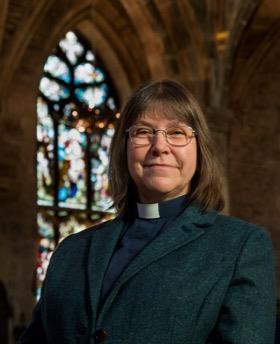
Lord: it is time. The summer was immense. Lay your shadow on the sundials and let loose the wind in the fields. Bid the last fruits to be full; give them another two more southerly days, press them to ripeness, and chase the last sweetness into the heavy wine. Whoever has no house now will not build one anymore. Whoever is alone now will remain so for a long time, will stay up, read, write long letters, and wander the avenues, up and down, restlessly, while the leaves are blowing.
(Rainer Maria Rilke, translated by Galway Kinnell and Hannah Liebmann, The Essential Rilke)
‘The summer was immense’ - it was, in so many ways The festival season was as always a busy time for the city, including thousands of visitors to the Cathedral We once again welcomed the Edinburgh International Festival and civic leaders to our worship at the beginning of August. We held and hosted concerts and art exhibitions, including John Bellany’s painting “The Box Meeting at Cockenzie” We are grateful for all the hard work that has gone into making all that happen.
‘The summer was immense’ - Scotland, like many other parts of Europe, experienced an exceptionally dry and sunny summer. This has meant blessings of warmth and picnics in parks, but also water shortages and problematic harvests for our farming communities That is why we are particularly grateful to members of the Royal Highland and Agricultural Society of Scotland for generously offering us produce for our Harvest Festival Service. We are glad to welcome their representatives among us at a time when we remember together the countless blessings we have received, and we give thanks for the land and the people who produce an abundance of food for us.
‘The summer was immense’ - but just like the poem, we are aware that the seasons are changing. When the wilder weather comes, and the nights are drawing in, life takes on a different quality We withdraw into our homes, if we have them, and we withdraw into ourselves a little as well At the same time, as communities we enter a time of remembering in the season of All Saints and All Souls, when our thoughts may be even more than usual with those whom we have lost
That season is followed by a time of Remembrance for all who have fought and died in wars of this and the last century This too is a poignant time for many: we remember the fallen of past wars, and we hold in our hearts the many places where war and conflict still rage today
These weeks leading into autumn and winter can bring with them so many complex memories and emotions that we will need to look out for each other Especially when some of us may be feeling lonely, whilst others are already picking up the pace and preparing for Advent and Christmas, let us remain aware of each other, even if that is not always straight-forward in our gathered congregation. “Bear one another’s burdens…”, the apostle Paul encourages the churches in Galatia (Galatians 6:2). A word to live by, especially at this time.
With many blessings, Sigrid
Thanks to all who helped decorate the cathedral so splendidly for the recent harvest services. Special thanks go to the Royal Highland and Agricultural Society of Scotland for providing the produce, to members of the congregation for donating dried goods and to our small (but magnificent) Flower Team for their arrangements.
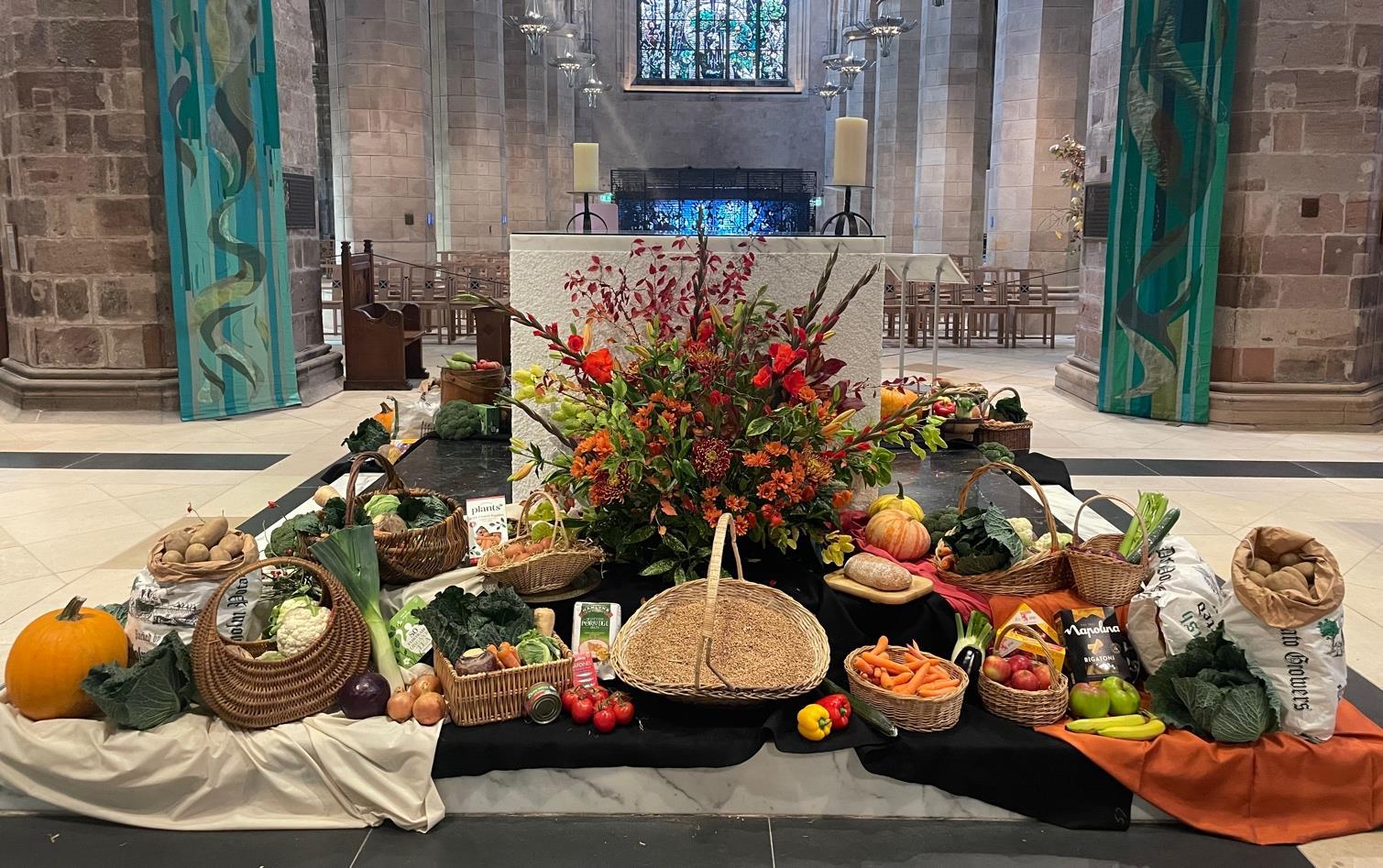



Rock Trust is Scotland’s youth homelessness charity, supporting young people aged 16-25 who are at risk of or experiencing homelessness. We have been working with young people to avoid, resolve, and move on from homelessness since 1992, and our mission is to end youth homelessness for good
Everything we do at Rock Trust is designed for young people, with young people We work with every young person on a one-to-one basis to deliver support that meets them where they are Kindness from our community is vital to be able to continue our work and makes a positive impact on the lives of young people
Over the years, St Giles’ has supported us in different ways. From food collections to Christmas donations, we are grateful for your generosity that has helped young people facing the trauma of homelessness Support from St Giles’ means that Lewis was able to get help from Rock Trust and start to build a brighter future.
Lewis’ childhood was marked by challenges at home His mum struggled with mental health issues, while his dad was recovering from drug addiction and dealing with alcohol dependency. These difficult situations took a toll on Lewis’ well-being, affecting both his emotional health and school attendance, leaving him in a vulnerable position.
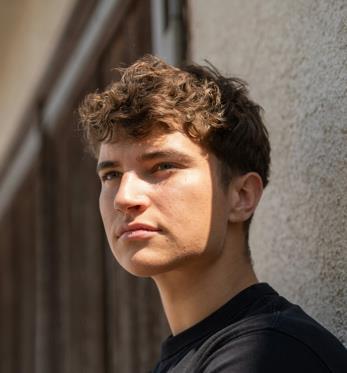
From the age of 12, Lewis found himself bouncing between living with his mum and dad. He even spent a brief period with his sister around Christmas last year, but by New Year’s, his living situation had reached a breaking point Desperate for some stability, Lewis found refuge with his friend’s family, staying on their sofa for a few months. Lewis believes this was a turning point in managing his mental health due to the safety and stability provided by his friend’s parents As soon as Lewis turned 16, he took the brave step to register himself as homeless with Fife Council, which led him to be referred to Rock Trust.
Since receiving support from Rock Trust, Lewis has moved into temporary accommodation, which has given him the stability he needed. While he remains deeply grateful for his friend’s family, he didn’t want to overstay his welcome Now, with the help from Rock Trust, Lewis has been able to set up a new Universal Credit claim, manage the paperwork for his accommodation, and begin building a more stable future.
Lewis reflects, appreciating the steady guidance he’s found with Rock Trust: “It’s good to have the support, and it’s good to talk to someone and not having to make this journey all on my own ” Your continued support has made a difference to the lives of young people experiencing things that no young person should ever go through. We know that ending youth homelessness is possible. But we can’t do it alone.
If you would like to learn more about our work and how you can support us, please contact us at fundraising@rocktrust.org.
We are pleased to welcome Jamie Sutherland, Probationer Minister, to St Giles’and are delighted to take the opportunity to get to know a little more about him…
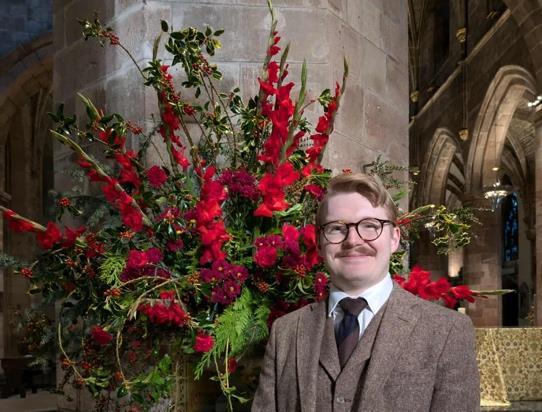
What brought you to St Giles’?
I have always deeply loved the life of Edinburgh’s Old Town Before I began training for ministry in the Church of Scotland, I was a member and elder at Greyfriars Kirk Having now experienced a variety of different parish contexts, there is something exciting about ‘bookending’ my training journey with a return to this part of the city St Giles’ of course provides a different scale and context It is a place which holds together both the ancient and the modern, the local and the traveller, a tumultuous history nevertheless developing into a present place of beauty, hope, and sanctuary. It is this rich tapestry of the different aspects of St Giles’ which has made me feel that this is the place to be at this point in my journey
If you could have witnessed any historical event in St Giles’, what would it have been and why?
I would like to have been part of the service of worship which took place on 2 October 1929 for the Reunion of the Church of Scotland and the United Free Church, processing together to St Giles’ in a moment of blue-skied respite amidst some ferocious Scottish weather I have deep hope that we might yet see more occasions of Christian unity in the future.
What do you see as our biggest challenge just now, as a congregation?
To be the Church means to live together as the Body of Christ - a community which shows that the world can and will be a different place when we live in the love of God and love of neighbour Edinburgh City Centre is a wonderful, vibrant place but it can be a difficult setting to maintain a permanent sense of community and togetherness. Going forward, it will be worthwhile for us to consider what it means for St Giles’ to be a living community of faith in this place and time This will strengthen our vision and values, putting us in a positive place to hold together all the wonderfully diverse strands which make up life at St. Giles’.
In a time of global uncertainty and division, how can faith communities be a source of hope and unity?
Much of the division of the world comes from the human tendency to define ourselves by things which are not inherent to our common humanity We overly define ourselves by our national, ethnic, professional, or social identities. Even our political opinions have become less about conclusions we reach about complex issues but have morphed into aspects of our self-identity in quite dogmatic ways Faith reminds us that our identity is fundamentally God-given, as people who created to share in loving relationship with God and one another. This cuts across all these self-definitions which we have used to divide ourselves For Christians, there is something hugely powerful in reminding ourselves that our identity is always what we share in Christ, and that sharing in his humanity makes us more fully human.
What’s one thing people are often surprised to learn about you?
I have a strong interest in maritime history, which surprises people because there is absolutely no personal connection to explain why There is something about the sea which is fascinating Geographically, it both connects us and divides us Life at sea creates fellowship but also isolation In the metaphors of Revelation, the sea represents the old world of chaos and separation and therefore it will not be part of the New Creation As things stand now, however, a parish by the sea might be a very pleasant calling!
On Sunday 22nd June, at the Stated Annual Meeting of the congregation of St Giles’, the Cathedral’s Report & Accounts for the year to 31 December 2024 were laid before the meeting. The year of St Giles’ 900th Anniversary had been one of many highlights, and some of these featured in the Kirk’s financial performance
The overall result for the year was a surplus of £0 2m, compared with a surplus of £0.04m in 2023. However, this figure was reported after taking account of two significant, but somewhat illusory benefits: first, the upwards revaluation of the Manse from £1 5m to £1 8m, following an assessment by several professional firms while the property was vacant. This is, of course, a non-cash item, and would only have a real impact on the Cathedral’s finances were the Manse to be sold (which is not planned). The second was an uplift in the value of the portfolio of stocks and shares which the Cathedral has, by just over £110,000
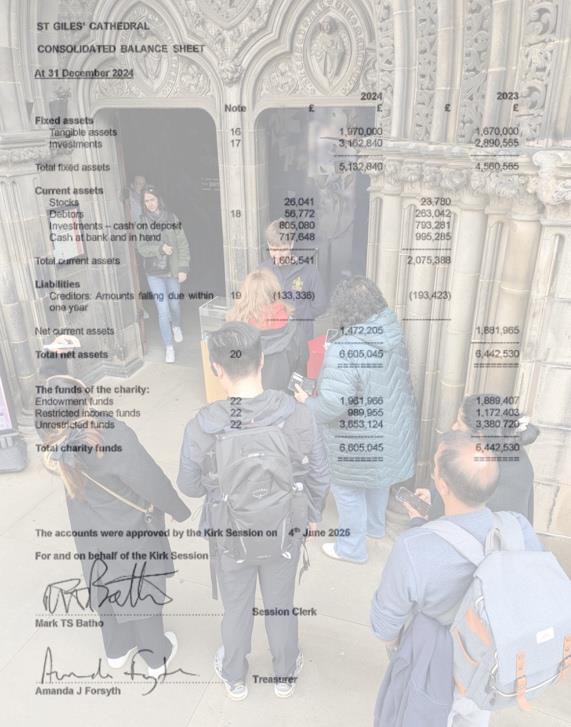
Prior to these two items, the deficit for the year amounted to £250,000 – the difference between total income of £1.7m and total expenditure of £1.95m.
Some items of expenditure lie outwith our control. Our Giving to Grow allocation in 2024 amounted to £135,277; and the cost of insuring the building and its contents (with Ecclesiastical and Aviva respectively) is almost £144,000 The total cost of repairs and maintenance of the fabric of the building was £336,336, including £190,397 which was spent on lighting projects – the improvement of the lighting in the Thistle Chapel, and the restoration of the external illuminations to the crown spire, which provided a very visible reminder of St Giles’ role at the heart of Edinburgh’s civic and ceremonial life in our 900th year These projects were funded through the generosity of donors to the Renewal Appeal Trust.
Overall, though, the shortfall in the St Giles’ income compared to its running costs remains a problem, and work is continuing apace to allow the introduction of visitor charging. In the meantime, the picture for 2025 has become much less daunting thanks to the work of an organisation called Complete Works Their staff of ‘Welcomers’ are trained actors, who can confidently greet visitors to the Cathedral with a request for a donation, as well as enhancing the tone of the building by preparing them for their visit and organising queues to enter in a manner which enhances the perceived attraction of entrance These might sound like small things, but the difference they have made to our donation levels has been tremendous – it is likely that our financial position in 2025 will break even rather than seeing another deficit. Furthermore, the number of visitors has actually fallen to more manageable levels In 2024, 1 7m people came through the doors of St Giles’, which exacerbates the wear and tear issues we constantly face. Having fewer visitors who each donate a higher amount than last year therefore has a doubly positive effect – as well as helping restore the calm ‘sense of place’ that the house of God deserves
We are still working hard to complete the preparations for charging, but the financial respite offered by the Welcomers is welcome indeed!
Amanda Forsyth, Treasurer
We were delighted to have hosted John Bellany's extraordinary 1965 painting "The Box Meeting" at St Giles' Cathedral - a rare privilege to have experienced this remarkable work within the sacred walls of Scotland's High Kirk.
This compelling masterpiece held deep significance in Scottish art history Created when Bellany was just 23, the painting brilliantly transposed Giovanni Bellini's Renaissance masterpiece "The Feast of the Gods" into the context of his native Scottish fishing villages The work captured the annual 'box meeting' tradition from Cockenzie and Port Seton, where Bellany grew up - a vibrant community celebration following church services, complete with parades, banners, pipe bands, and harbour festivities.
The 'box' itself represented something profoundly meaningful - it housed funds to support the widows of local fishermen lost at sea, embodying the tight-knit community spirit that influenced Bellany's work throughout his distinguished career This painting exemplified his unique ability to transform classical artistic traditions through the lens of Scottish working-class experience, creating art that spoke to both local community and universal human themes.
The cathedral display beautifully complemented the major retrospective "John Bellany: A Life in SelfPortraiture" at the nearby City Art Centre, which featured over 80 of the artist's autobiographical works.
In August, we hosted an extraordinary musical tribute featuring the Stephanie Legg Ensemble performing "Bellany" - compositions that translated the artist's visual storytelling into sound, exploring the social and religious themes that defined his work The concert provided a moving finale to our exhibition
Both the painting display and musical performance offered our community a unique opportunity to engage with one of Scotland's most important painters within the spiritual atmosphere of our cathedral, where art, faith, and community came together meaningfully in celebration of Bellany's enduring legacy.
Sarah Phemister, Head of Heritage and Culture

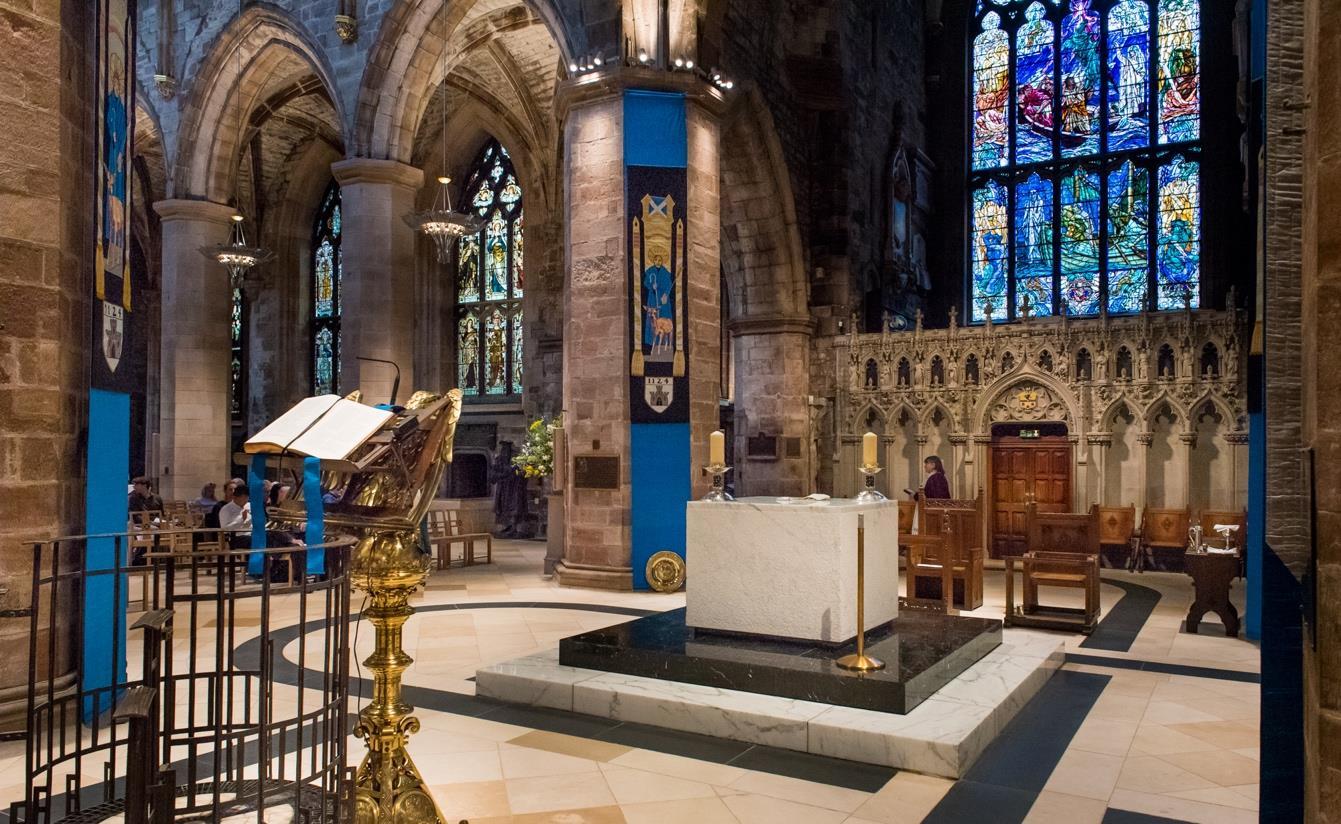
Sunday 1st of September was a very special day for me – my first St Giles’ Sunday. Following on from the 900th anniversary last year, the focus was firmly on looking forward to our future.
The service itself was memorable for the music and setting of Vierne’s Mass alone. And as there was only one service it meant the congregation was all together to enjoy Communion together, without any sense of rush for another service to follow It also meant we were able to enjoy a reception after worship, on the day, which so many people stayed for.
I found it gratifying that so many people stayed for the reception, and for me, it evidenced that so many of us at St Giles’ are looking to build a greater sense of community in our congregation.
As it happens, St Giles’ as a place of hospitality had been the theme of my sermon that day, with an emphasis on a radical hospitality that welcomes all people into our sacred space. To quote the Presbyterian theologian Letty Russell, ‘Hospitality is not about inviting people into our lives in order to make them like us, but about being willing to be changed by their presence.’
That is to say, we will flourish in our future by joining with other associations, bodies, institutions, and individuals to explore common themes and concerns and how together we may address them in our life together We recognise that even in these more secular days we have a privileged place in Scottish life, and as such we have an opportunity to be a convening space, through worship, the arts and thoughtful debate that can bring others in Scottish society together in our search for the common good
We have a marvellous opportunity ahead of us, and a high calling to respond to. Together, and with God’s help, we will do it
Scott Rennie
We record here Scott’s Address from the day, which invites us to consider the true hospitality St Giles’ can offer to us all
“One of the occupational hazards of being a minister is going to wedding receptions Now don’t get me wrong, don’t take that the wrong way It’s always a joy to be with couples on their wedding day. It’s one of the most meaningful tasks in ministry to be with a couple on their wedding day as they make that covenant and commitment together It’s always accompanied by such joy
But the real challenge in the day usually comes later when it’s time for the meal Because, let’s be honest, every family has someone who doesn’t quite fit the seating plan the auntie who’s a wee bit eccentric, the uncle who tells the same stories, over and over again. Or there’s the difficult cousin no one knows quite what to do with And that my friends, is often where I end up If you want to know where the awkward relative is sitting at a wedding, just look for the minister we’ll be right beside them. Won’t we? Nods of affirmation from my colleagues
It’s all done kindly, of course, but it shows how much energy goes into deciding who sits where When I meet with couples before a wedding it is often the seating plan that is the biggest stress as family politics play out Why should it matter? Because in weddings, as in life, the seating plan does matter. Who’s at the top table? Who’s pushed to the edges? Who gets noticed, and who’s quietly forgotten?”
There’s nothing new about any of this. As today’s reading from Luke makes clear, Jesus knew all about seating plans too In his day, meals were all about honour and status where you sat told everyone what you were worth, economically and socially And so, in Luke 14, when he finds himself at a Sabbath meal in the home of a leading Pharisee, he watches the guests jostling for the best places at the table He was a great people watcher
Then Jesus tells a story — not just about good manners, but about the way God’s kingdom works It’s not about scrambling for honour It’s about humility And even more, it’s about opening the table wide enough for those who never usually get an invitation ”
Jesus first says: don’t seek the highest seat, because the place of honour is not yours to claim It is God who exalts, God who lifts up And then he goes further: when you throw a banquet, don’t just invite your friends and relatives, those who can repay you in kind. Instead, invite the poor, the crippled, the lame, the blind In other words, invite those who cannot pay you back. What Jesus offers is not a piece of social etiquette for Club Dining Rooms but a picture of God’s kingdom. God’s banquet does not revolve around privilege, but around grace It’s not about keeping your circle tight; it’s about opening wide the door to those who are usually left outside.”
As we celebrate St Giles’s Day together as one congregation at one worship service, it would have been unthinkable not to be gathered around this magnificent Holy Table to celebrate Holy Communion. Weekly communion is so central to our life together.
Central too is the presence of so many visitors from across the world whose presence enriches us week by week. Strangers who become friends, and who join us at our Lord’s table, a table of grace, a table of radical hospitality, a table that is open to all If you are among those visitors today, know that as we celebrate this special day today, you are not strangers, but welcome friends, and our spiritual home and life together is made whole by your presence
Gathering around this table is central to our life together at St Giles’, because it reminds us that we are here by the grace of God alone We are here to give thanks for that grace which bids us welcome and calls us home, resident or traveller, certain or doubting.
When presented with this table week by week it is easy to miss the obvious – that this Holy Table to which Christ welcomes us is square. There’s no long side or short side. No side of preference, no end that is distant from the those who preside It is a table which whatever direction you approach it from you are at no disadvantage whatsoever
I find that incredibly meaningful It is a powerful expression of the theological vision that reordered this church from a privileged altar like table at one end, to an open table at the centre of the worship space, with no preferential placing at all.
All are equal in the sight of God, all are loved, all are welcome
Whatever part of this High Kirk’s life we belong to, whatever our role, this conviction should always remain central to our life together: We are here by the grace of God We are called by love. Jesus welcomes us all.
One voice that helps us think about this today is the theologian, Letty Russell She was a Presbyterian minister in the United States, in fact, one of the first women ordained there, and she devoted her life to working on the margins with poor communities in New York, (where she studied at union Theological Seminary) and later too, as a professor of theology at Yale Divinity School.
She became a pioneering feminist and liberation theologian In her book ‘Just Hospitality’, written at the end of her life, she reminds us that hospitality is not simply about being friendly or polite, but about God’s radical welcome Russell insists that true hospitality must be bound up with justice, and that it transforms not only the guest but also the host As she puts it, ‘Hospitality is the practice of God’s welcome, embodied in our actions as we reach across difference to participate with God in bringing justice and healing to our world ’
In my few months here at St Giles’ I have been overwhelmed by the amount of good will that there is to St Giles’ in this city, and beyond our shores even, and how much our place at the centre of Edinburgh and Scottish life is valued by many others. In a more secular age in some ways, it is astonishing.
Even still, this place holds a place of privilege in Scottish life, and that privilege of having a seat at society’s table brings us an immense opportunity and responsibility. That opportunity is to be a convening space – a unique opportunity to be a host that can bring in other people, marginalised people to the conversation - those who can’t take their place for granted.
If we have some privilege, and I think we still do, then we ought to use it not for ourselves, but for others. As we look forward together to our future life here, I see this sanctuary as a centre of radical hospitality, where others are embraced and welcomed in to join the conversation of what a good society, or a godly society as the Reformers would have framed it, looks like.
A convening space, a place where all voices are welcome and where the conversation is rooted in the grace of Christ’s love and enduring presence.
Not only is this a place where friend and strangers can meet, it should be a place where we can all meet, across our differences, and converse in humility, reflecting the grace of our Lord Jesus Christ, the one who is truly our host and who calls us here
Russell puts it this way: ‘Hospitality is not about inviting people into our lives in order to make them like us, but about being willing to be changed by their presence ’ That is a radical thought Because often we imagine ourselves as the generous hosts, graciously extending a welcome. But Russell reminds us that in God’s kingdom we are both guests and hosts and the stranger we welcome may be the very one God uses to reshape our community, to open our eyes, to deepen our faith
True hospitality transforms not only those who are received, but also those who receive Christ’s Spirit is moving in this place, calling us to a radical hospitality as yet unseen The table is ready, the way is clear, the feast is prepared for us. And not just for us. For the grace of God is boundless and knows no end It laughs at the barriers of culture and custom we invent to keep this grace to ourselves It moves beyond our limited vision of what love is, and calls people beyond our knowing to gather with us in this feast of love and grace. Their presence can bless us and transform us, even as, be they sacred or secular, we see the face of Christ himself
Come then, join me at the Lord’s Table the place where this vision is experienced Here is the feast to which all are invited, and where no one is turned away Where the poor and the privileged stand side by side, receiving bread and wine as gift. Here we meet God’s hospitality a welcome that doesn’t depend on merit, achievement, or social standing, but only on grace
So come, not because you must, but because you may
Come not because we are uniform, but because we are united in our diversity.
Come, for here at Christ’s table, the banquet of God’s kingdom begins, and we discover what it means to be a truly hospitable community – transformed by each other, transformed by the grace and love of Christ ”


We’ve had a wonderful summer of music in St Giles’ Cathedral, with a great variety of concerts and events hosted in the building Highlights include our Celebrity Organ Recital series, which boasted record highs in attendance, and ‘Resonance’ with Maria Rud’s art lighting up the east window, accompanied by flute and organ Success continued in September, with a sold-out performance of the ‘Interstellar’ score by Roger Sayer, who played on the original film’s soundtrack
Our St Giles’ at Six series has also been very well attended, with a truly eclectic mix of performers. Upcoming concerts include the Waverley Consort (12th Oct), Laurence Dunn’s ‘Philomusica’ (26th Oct) and an all-female performance of Vivaldi’s ‘Gloria’ (23rd Nov).
On 23rd September, our congregation was treated to a wonderful (if slightly bizarre) occasion, with the recording of a Christmas service to be broadcast by the BBC Our choir were in great voice, singing music by James MacMillan and John Rutter (who celebrated his 80th birthday the next day), and the carol singing from the congregation (and minister!) raised the roof During the descant of ‘O Come All Ye Faithful’ , many of us forgot that we were only just on the other side of summer, not ‘amid the winter’s snow’ It was a spectacular occasion, which will be broadcast on 21st December (exact channel TBC)
Of course, you can hear our fabulous cathedral choir every Sunday morning, but we have another exciting occasion on Thursday 23rd October at 6:30pm, with a celebratory concert marking 730 years of the Auld Alliance in partnership with the Institut Français d'Écosse Expect to hear a selection of French and Scottish music spanning hundreds of years, including some arrangements of traditional folksongs The concert lasts an hour, and is free to attend, but registration on Eventbrite is recommended. There will also be a reception in the Institut Français after the performance
Over the festive period, there will be the usual schedule of carol concerts and services. The cathedral choir’s ‘Sounds on Saturday’ concert will be on Saturday 13th December at 5:30pm, with the carol service on Sunday 21st December at 6pm. The Hogmanay Candlelight Concert will be at 6pm on Wednesday 31st December, and tickets will be released shortly Our cathedral organists will both be giving recitals as part of the St Giles’ at Six series; Jordan English on Sunday 2nd November, and Jack Oades on Sunday 7th December, both at 6pm We hope to see you there!
Jack Oades, Master of the Music
Following the completion of the major refurbishment to the Rieger Organ earlier this year, reported in the April edition of the newsletter, I am pleased to report the further completion of the updated lighting of the organ, case, pipes and surround.
The new LED lighting system has been specifically designed to enhance the architecture of the instrument and to complete the overall lighting aspect in the Cathedral building In the past and prior to the extensive upgrading of the lighting system in the main body of the building, the organ was not integrated into the overall lighting design and did not highlight the instrument or its position in the Cathedral.
The upgraded installation has provided a new system with powerful lighting of the pipework from high in the building together with new lighting of the vaults above, additional lighting of the window and the surrounds to the instrument case
This new installation also enables the Organ to be coloured to suit specific seasons and celebrations and to enhance the instrument for concerts and recitals
We are again grateful to the late Alastair Salvesen and his wife Elizabeth who donated the funds required to refurbish the organ and to provide this new lighting system to enhance the ambience in the Cathedral.
The fully refurbished Rieger Organ with its upgraded lighting now sits proud in the South of the building and provides a wonderful focus for worship and music making in St Giles’ for many generations to come
JM Andrew, Fabric Committee Chair

In early 2023, and following the Service of Thanksgiving and Vigil for the life of HM Queen Elizabeth, held in St Giles’ Cathedral on 12th and 13th September 2022, the Cathedral’s Kirk Session made the decision to commemorate this significant event in the life of the Cathedral and Scotland This was to mark the place where the late Queen lay at rest at the East Side of the Holy Table in the Cathedral with a memorial stone

The Service of Thanksgiving and Vigil for the life of HM The Queen was an unprecedented and, to date, unique event in Scotland’s rich history. It was held as part of ‘Operation Unicorn’ and delivered at the wish of the late HM the Queen on her death in Scotland No other sovereign has had such a Service of Thanksgiving in Scotland, with the breadth of Scottish society in attendance. Following the service, a vigil was held and, over the following 23 hours, over 33,000 members of the public queued to pay their respects to their much-loved late Monarch During the vigil, the Late HM Queen’s children, including HM The King, stood their own personal vigil to their late mother While the coffin was present in the Cathedral the Royal Company of Archers, the Sovereign’s Bodyguard in Scotland, mounted guard. Members from the Royal Chaplains in Scotland were also on duty throughout

The memorial stone is sited on the floor at the location to the East of the Holy Table where HM The Late Queen’s coffin lay while in the Cathedral The stone is formed of simple black slate and engraved with the Scottish Crown and ER cypher and dates together with the dates when the coffin was at rest in the Cathedral The engraving was designed and carried out by Roxanne Kindersley from the renowned Cardoso Kindersley Workshop and compliments other engraved memorials undertaken by Cardoso Kindersley Workshop elsewhere in the Cathedral
The private dedication of the memorial stone in the presence of Their Majesties the King and Queen by the Rev Dr Scott M Rennie, Minister of St Giles’, was held on 2nd July 2025, and was attended by senior office bearers and members of the Cathedral’s Kirk Session on behalf of the congregation who were presented to Their Majesties.
Following the dedication ceremony HM The King presented new badges of office to the Royal Chaplains in Scotland as part of the private visit to St Giles’

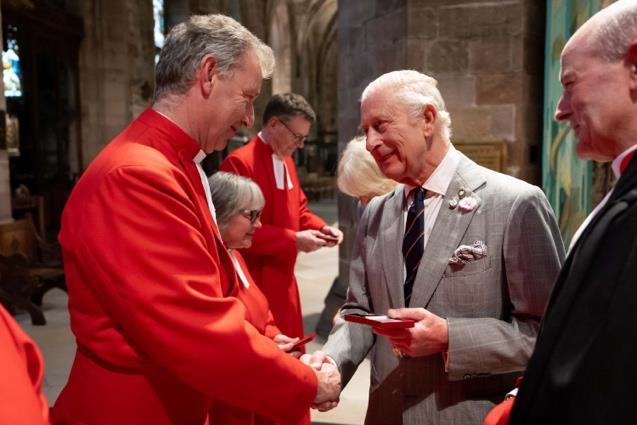

This year’s Christmas Worship offering for BBC Television was recorded on 23rd September It was a great success.
A huge amount of work went in to transforming St Giles’ into a Church at Christmastime! Scott offers his thanks to all who supported the event, and in particular to the all the volunteers and staff, especially the Flower Team and Banner Guild whose amazing efforts absolutely transformed the look for the church, and to to Jack and the Choir who lifted the Cathedral heavenwards. It was a great opportunity to get some profile for St Giles’ across the UK at Christmas and all the hard work was greatly appreciated
The TV Programme will be broadcast on the 21st December and also will be available on iPlayer

From Wednesday 23rd April until Monday 15th September, the Banner Guild met every other week, except during the Festival.
Over the warmer months, we refurbished the Christmas angels, sewing them on new red net (they had been made in 1992). Bible ties have also been embroidered and sewn. The tapestry heraldic shields for the Dean of the Thistle and the Lord High Commissioner for the General Assembly, along with a couple of other panels, have been cleaned and remounted on new brocade.
Setting up in the Holy Cross Aisle, we have enjoyed showing our work and chatting to the many visitors from around the world. We will start again in April 2026.
Together with a generous cheque, Sam was presented with a Cairngorm pectoral cross made by Sheana M Stephen D A The heavy silver cross has in its centre a traditional Scottish stone, a Cairngorm (nowadays, a smoky quartz) The stone is surrounded by silver nails, representing the suffering of Christ and of the world – north, south, east and west The nails radiating from all around the central stone create a sun-burst effect, symbolising resurrection: the gold-dust represents hope On the back is the hallmark: Edinburgh’s castle, the lion of Scotland and a celebration mark for the Jubilee of the late Queen Elizabeth
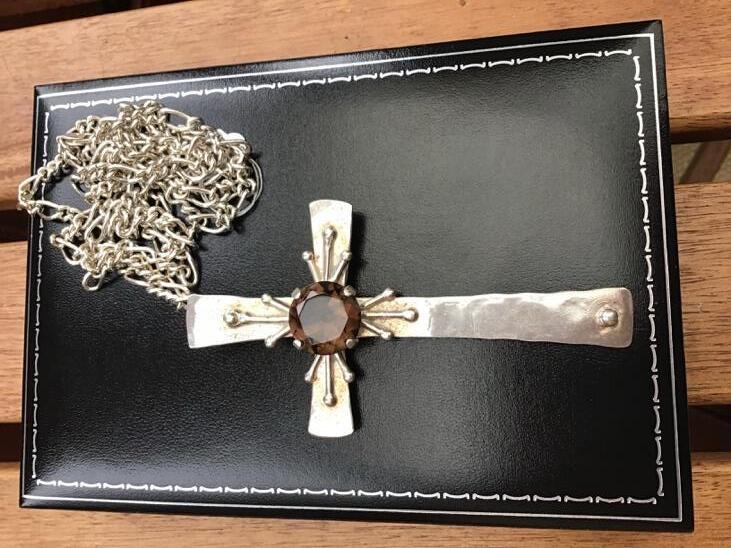
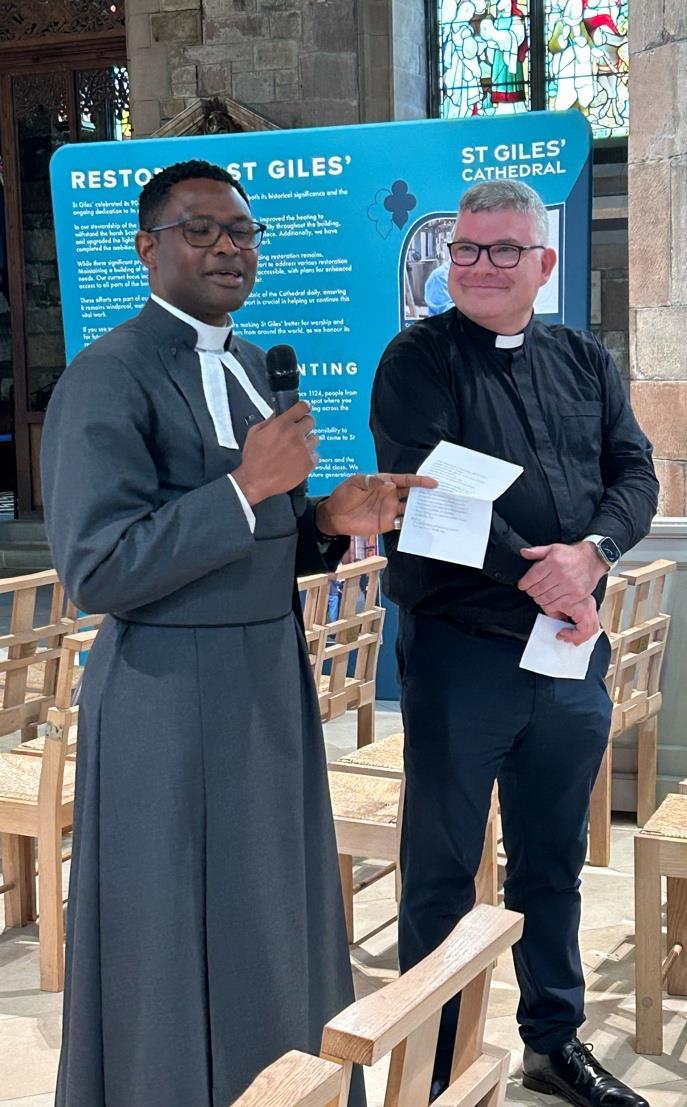
I do not often receive an email from Florida, especially one sent by a Presbyterian minister and professor Joshua Braley is researching Jessie MacGibbon and wished to see her embroideries in our possession He had read the fascinating article that Dr Elizabeth Cummings had written in our newsletter- evidence that it is read far and wide.
On Saturday,14th June, we three met in the Holy Cross Aisle. I was able to show Josh the communion table frontal designed and sewn by Jessie MacGibbon for the original Lorimer table and first used on Christmas Day 1911, along with the other items we hold in trust
Elizabeth, with her expertise and vast knowledge of the Arts and Crafts Movement, was able to fill in all the gaps: where the MacGibbons lived, near Jessie MacGibbon’s friend and mentor Phoebe Traquair, along with other areas for his research


I’m a Presbyterian minister and college professor from Florida For some time I’ve been working on a book about “Scoto-Catholicism,” the high-church movement which flourished in the Church of Scotland from the 1890s through WWI. In summer 2025 I traveled to Scotland to continue my research Near the end of my trip, I came to St Giles’ Cathedral to view embroideries by a former member of the congregation, Jessie Rintoul MacGibbon (1867-1918). I would argue that she was Scoto-Catholicism’s premier artist
Earlier studies of the Scoto-Catholic movement have focused overwhelmingly on its male leaders Despite this, women (including Jessie MacGibbon) played key roles. Notwithstanding her importance, I had found information about her hard to come by. Imagine my excitement when a fresh article about her, written by art historian Elizabeth Cumming, appeared in the October 2023 St. Giles’ News.
Professor Cumming readily responded to my emails, and put me in touch with Sheana Ashton, master embroiderer and custodian of St. Giles’ banners and frontals. After these exchanges, I was ready to travel through Scotland - in the footsteps of Jessie MacGibbon!
My first stop was the former Burnbank Parish Church in Hamilton, now the Coptic Orthodox Church of St. Mary and St. Michael. Elizabeth Cumming told me that the church had a mural by Jessie MacGibbon, and I was determined to see it Father Alisha, pastor of the Coptic congregation, arranged for me to visit on a Sunday morning This, however, proved to be unexpectedly challenging. The taxi-driver I called took me by mistake to the Roman Catholic Church of St. Mary. For an American tourist to convince a Glaswegian cab-driver that he has gone to the wrong place, and that one “Church of St Mary” is not interchangeable with another, is no easy business Nevertheless I eventually reached the church, was welcomed warmly, and viewed the mural (painted in 1907). A depiction of St. Paul after his shipwreck (Acts 27:35), it was strikingly original - a true masterpiece!

My family and I went next to Kelso, where around 1906 Jessie MacGibbon painted an exquisite fresco of three angels over the apse of the Hoselaw Chapel. This is a tiny jewel box of a church, set on a rugged hilltop. Just a 90-minute drive from Edinburgh, it’s an absolute must-see!
I came to St. Giles’ near the end of my journey. One morning, Sheana Ashton showed me the splendid collection of embroideries Jessie MacGibbon worked for the cathedral: angels, evangelists, and an Agnus Dei Ms Ashton explained to me that the embroideries were largely retired from active use after St. Giles’ Holy Table was lengthened during the mid-20th century. This led to their preservation, since they were stored rather than being used until “worn out”: a great blessing indeed
My visit to St. Giles’ was a delight. I learned much about Jessie MacGibbon, the ScotoCatholic artist and craftswoman Many thanks to all who have helped with my project!
Joshua Braley
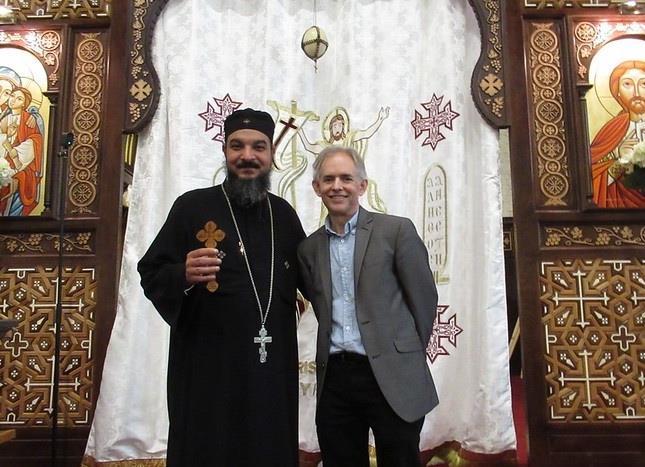


4th July 2026 will be the 250th anniversary of the approval of the Declaration of Independence by the Second Continental Congress, although the document was actually signed by most delegates on 2nd August 1776 The War of Independence that followed was a truly global conflict, not merely restricted to the eastern seaboard of America The cessation of hostilities formally concluded with the signing of the Treaty of Paris on 2nd September 1783.
Following the end of the war and Britain’s recognition of the nascent United States of America, trade routes flourished once again As raw materials and manufactured goods move between nations, then so too do people Here in Edinburgh, the university with its internationally renowned medical school, had previously attracted many students from America and once hostilities were over that relationship resumed Within a decade of the war’s conclusion, more than a dozen American medical students were matriculated at Edinburgh.
War with the former colonies was over, but war with Britain’s perennial enemy, France, would ignite once again in 1793 when the French Republic declared war on Britain. Throughout Britain, a fear of radical elements, supporters of revolutionary ideals, sparked febrile levels of governmental activity In Edinburgh, all foreign nationals were required to report to their local magistrate, providing him with details of their origin, professional status, place of residence, and date of their arrival in the city This compulsory census was called the Register of Aliens
One notable entry on the Register is that of Anthony Rogerson, from Virginia, USA, who gave his profession as ‘fencing master’. His address was given as Baxter’s Close on the Lawnmarket and he signed the first Register in 1794 Rogerson would have been a neighbour of Rabbie Burns, who lodged in Baxter’s Close in 1786 The clerk recording Rogerson’s details noted that he was ‘a black man’ and had arrived in Edinburgh in 1783, making him the first American to settle in Edinburgh following the cessation of hostilities
Rogerson was clearly doing well for himself since his arrival and was listed in Thomas Aitchison’s ‘Edinburgh Directory’ of 1797 and 1799, by which time he had relocated to Brodie’s Close (possibly named after Francis Brodie, father to the notorious thief, William) Baxter’s Close had, by this time, been purchased by the council ‘to clear the way for Bank Street and North Bank Street’ (BOEC, vol XII, p.14). Aitchison’s ‘Directory’ listed all town officials, magistrates, and included an ‘Alphabetical Arrangement of the Names and Places of Abode of Private Gentlemen, Advocates, Writers to the Signet, Merchants, Tradesmen’ Hoi Polloi most definitely not included

Rogerson further cemented his place amongst the Edinburgh establishment with his marriage to Cecilia Megget, daughter of John Megget, a starch manufacturer, on 12th July 1798 The happy couple were married at the New North Kirk in St Giles’ and were said to be ‘both of this parish’
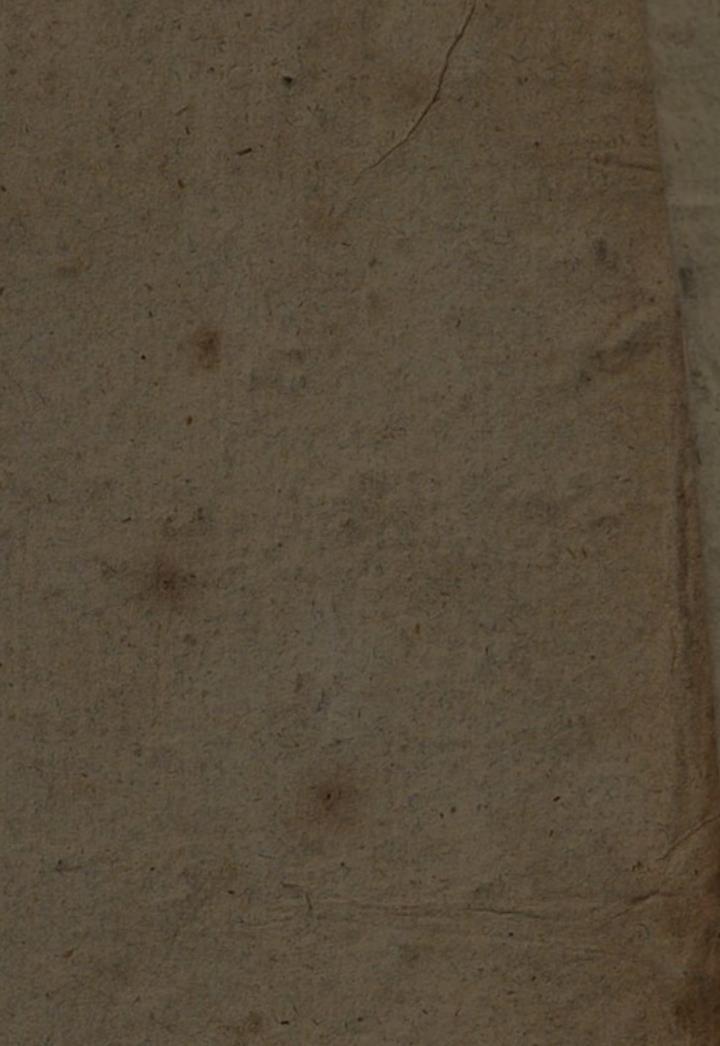
And that’s where my short story ends, for now at least The first American to settle in Edinburgh after the War of Independence was a member of St Giles’ congregation. He worshipped here, he married here He probably knew Robert Burns and Deacon Brodie, incredible as it sounds!
My research is ongoing, but I will offer this before signing off; it is my contention that Rogerson was a black loyalist, taking up arms following ‘Dunmore’s Proclamation’, which would ‘declare all Indented Servants, Negroes, or others (appertaining to rebels) free that are willing and able to bear arms’. To be continued
Dr Kevin Hall
Since retiring from St Giles’ at the end of 2024, finishing with a memorable final Hogmanay concert, much of our time has been spent in organising the move south to Kent, back to where we had lived before coming to Edinburgh in 1996 The whole process has been rather longer than expected, but, as of this week in mid-September we are finally reunited with all our belongings, and have been unpacking many, many boxes.
We were greatly touched by the marvellous send-off from St Giles’, in the form of the celebratory concert given by many friends and colleagues at the end of January – a memorable occasion St Giles’ generosity did not end there; The Friends of the Music had presented me with the gift of a voucher for a cookery course at the Raymond Blanc cookery school at Le Manoir aux Quat’Saisons outside Oxford Brigitte and I were able to stay the previous night and enjoy the delights of the hospitality there before I embarked on a fascinating day gaining practical insights into the Burgundian heritage and methods of Raymond Blanc’s art There were only two participants on the course that day, and neither of us had reckoned with the amount of eating involved – and that after a very good breakfast! Suffice to say that it was an experience that I would never have had without the huge generosity of the Friends Jumping forward to the present, Brigitte and I have just returned from a marvellous railway holiday in Switzerland, which was how we used the hugely generous gift from the St Giles’ congregation. When we planned it we thought that we would be well settled into our new home by the middle of September, but that was not to be, so we arrived back last Monday to have the removers coming on Tuesday!
As some of you will know I have always had an interest in railways; fewer will be aware that my father was the last in line of Chief Civil Engineers on what was the Western Region of British Rail, the famous Victorian engineer Isambard Kingdom Brunel being the first Switzerland is of course renowned for the efficiency of its railways and has some impressive engineering in the Alps as well. We were able to experience this on an organised tour which included a day on the Bernina Express, taking us from Chur into the Italian-speaking part of the country, and then also part of the route of the Glacier Express, from Chur to Brig, the gateway to the Simplon Pass From there the trip moved on to near Zermatt, where the line quickly climbs over a thousand metres, the train effortlessly switching to the rack and pinion method of traction where cogs are engaged to enable adhesion on the very steep inclines

Apart from the journeys (one of our party calculated that it was about 23 trains in total during the week) Brigitte and I also had time to explore some of the musical culture of Switzerland. The Abbey of St Gallen is a UNESCO World Heritage site, and we were fortuitously able to visit an exhibition of some of the world-famous music manuscripts which are held there in the Abbey Library. On our other free day we went to Sion, in the French-speaking part of Switzerland, and were able to see what is the oldest playable organ in the world in the Basilique de Valère, on a hill high above the town – quite a strenuous climb, but well worth it not just to see the organ but also the Romanesque Basilica itself.
Suffice it to say the Swiss trains were impeccably punctual – checking on the Swiss railways app one day and seeing a delay reported for our train, further investigation showed that this amounted to one minute! Eurostar was also very efficient – sadly SNCF suffered quite a few issues, so that some quick work on the return journey was needed for the tour company to be able to book us on to the final Eurostar of the day from Paris, after a two-and-a-half-hour delay for us near Dijon
We are immensely grateful to the St Giles’ congregation for their generosity in allowing us to have such a trip to remember. Unfortunately, images of the special trains were very limited –obviously we were inside them – with the main photo-stops being at points where we were shrouded in cloud!
So now we are properly settling into Kent life; we have met up with many old friends and acquaintances, and have been worshipping at Canterbury Cathedral, as well as deputising in a number of the local parish churches We are looking forward to what comes next and the new opportunities which will arise We will undoubtedly be back in Edinburgh from time to time and look forward to keeping up with all the news from St Giles’.


Michael and Brigitte Harris
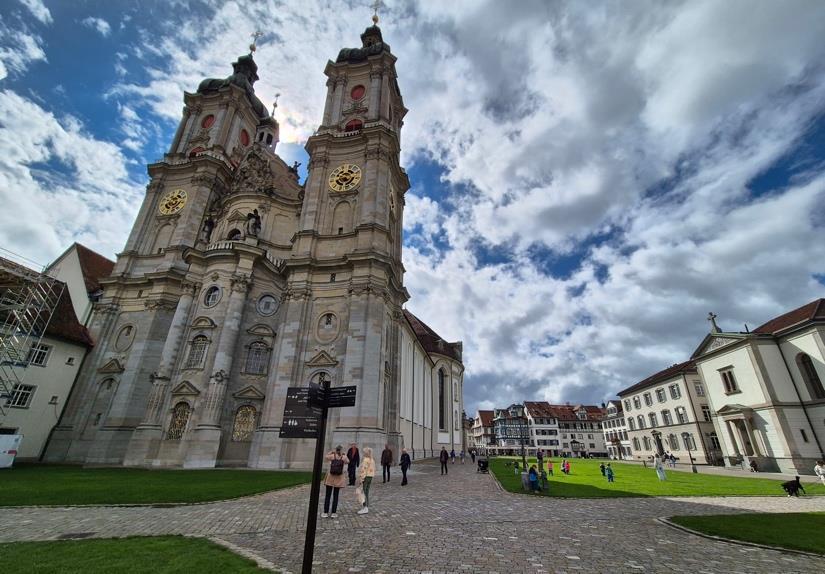

“Do not fear, for I have redeemed you; I have called you by your name, you are mine.” (Isaiah 43:1b)
Chloe Young - Adult Baptism 18th May 2025
Deaths
“If we live, we live to the Lord, and if we die, we die to the Lord; so then, whether we live or whether we die, we are the Lord’s.” (Romans 14:8)
Mary Jones - Died 27th August 2025 (D7)
Flo Galbraith - Died 14th August 2025 (D4)
"Where you go I will go, and where you stay I will stay." (Ruth 1:16)
Nicholas & Lucia Duvall - Blessing 06th September 2025
Imogen Dewar& Tom Burridge - Wedding 20th September 2025
St Giles’ staff and office bearers can generally be reached by email on addresses in the style firstname lastname@stgilescathedral org uk or jobtitle@stgilescathedral org uk Some commonly needed addresses are:
Scott Rennie, Minister minister@stgilescathedral.org.uk
Sigrid Marten, Associate Minister SMarten@churchofscotland.org.uk
Jack Oades, Master of the Music jack.oades@stgilescathedral.org.uk
Sarah Phemister, Head of Heritage & Culture sarah.phemister@stgilescathedral.org.uk Beadles beadle@stgilescathedral.org.uk
Several members of the team also monitor the comms@stgilescathedral.org.uk address, which can be a good way to get a general question directed to the right person!
Useful telephone numbers:
The Cathedral Secretary 0131 225 4363
Beadles' Office 0131 226 0672
Cathedral Shop 0131 226 0673
Finance Office 0131 225 8683
Heritage &Culture 0131 226 0674
The photographs of the Royal visit were provided by Aaron Chown, PA. We also wish to thank Peter Backhouse, Lorna Aikman, Caroline Hood, Ivar Struthers and Sheana Ashton, who have provided their photographic skills for several of the images